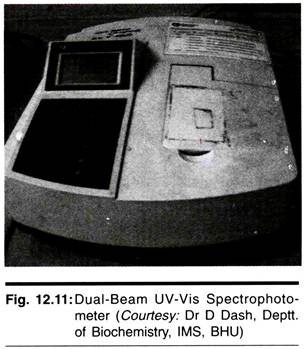ADVERTISEMENTS:
The following points highlight the three important species of Entamoeba. The species are: 1. Entamoeba Coli 2. Entamoeba Gingivalis 3. Entamoeba Hartmanni.
Species # 1. Enatmoeba Coli:
Entamoeba coli is the commonest species of Entamoeba found in the colon and has been stated to occur probably in 50% of human population.
ADVERTISEMENTS:
This amoeba lives in the lumen of the colon and does not enter the tissues of the wall. It is a harmless species (non-pathogenic) feeding on bacteria, particles of undigested food and other debris but never on blood cells or other lining tissues of the host, therefore, considered as endocomrnensal.
The trophozoite measures 15 to 40 microns (average individuals 20 to 35 microns) in diameter. The cytoplasm is not well differentiated into ecto- and endoplasm. The endoplasm is granular and contains bacteria, faecal debris of various sizes in food vacuoles. Nucleus is 5 to 8 microns in diameter containing a comparatively larger nucleolus which is not placed in the centre.
The cyst is spherical or often ovoid, highly refractile; 10 to 30 microns in diameter. Immature cyst contains 1, 2 or 4 nuclei, one or more large glycogen bodies and small number of filamentous chromatoid bodies with sharply pointed ends. Mature cyst contains 8nuclei and a few or no chromatoid bodies. Nothing is known about its life cycle in human intestine. According to Hegner, the cysts hatch as entire 8-nucleated amoeba.
Species # 2. Entamoeba Gingivalis:
Entamoeba gingivalis is commonly known as mouth amoeba inhabits the mouth. It lives in carious teeth, in tartar and debris accumulated around the roots of teeth and in abscesses of gums, tonsils, etc. According to Kofoid, 75% or more people over 40 years of age harbour this amoeba.
The trophozoite is as active as that of Entamoeba histolytica, 8-30 microns (average 10-20 microns) in diameter. The cytoplasm is well differentiated, endoplasm hyaline but vacuolated and contains a large number of leucocytes and bacteria in food vacuoles. Nucleus is 2 to 4 microns in diameter and contains a small central nucleolus. Monopodial movements in some individuals have also been observed.
This species does not form cyst since it is directly transmitted from one human mouth to another by contact during kissing or in feeding. Although Entamoeba gingivalis seems to occur more commonly in diseased mouths, there is no convincing evidence that the organism causes oral disease.
Formerly, it was believed to cause pyorrhoea and now it is established that it is a bacterial disease but, however, E. gingivalis aggravates it.
Species # 3. Entamoeba Hartmanni:
Entamoeba hartmanni resembles the minuta form of E. histolytica. It lives in the lumen of the large intestine and invades the intestinal wall. Its trophozoite measures from 9-14 microns in diameter. The mature cysts are tetranucleate and smaller than the cysts of E. histolytica. The infection of this species of Entamoeba also causes amoebic dysentery but it is believed to be less harmful.



